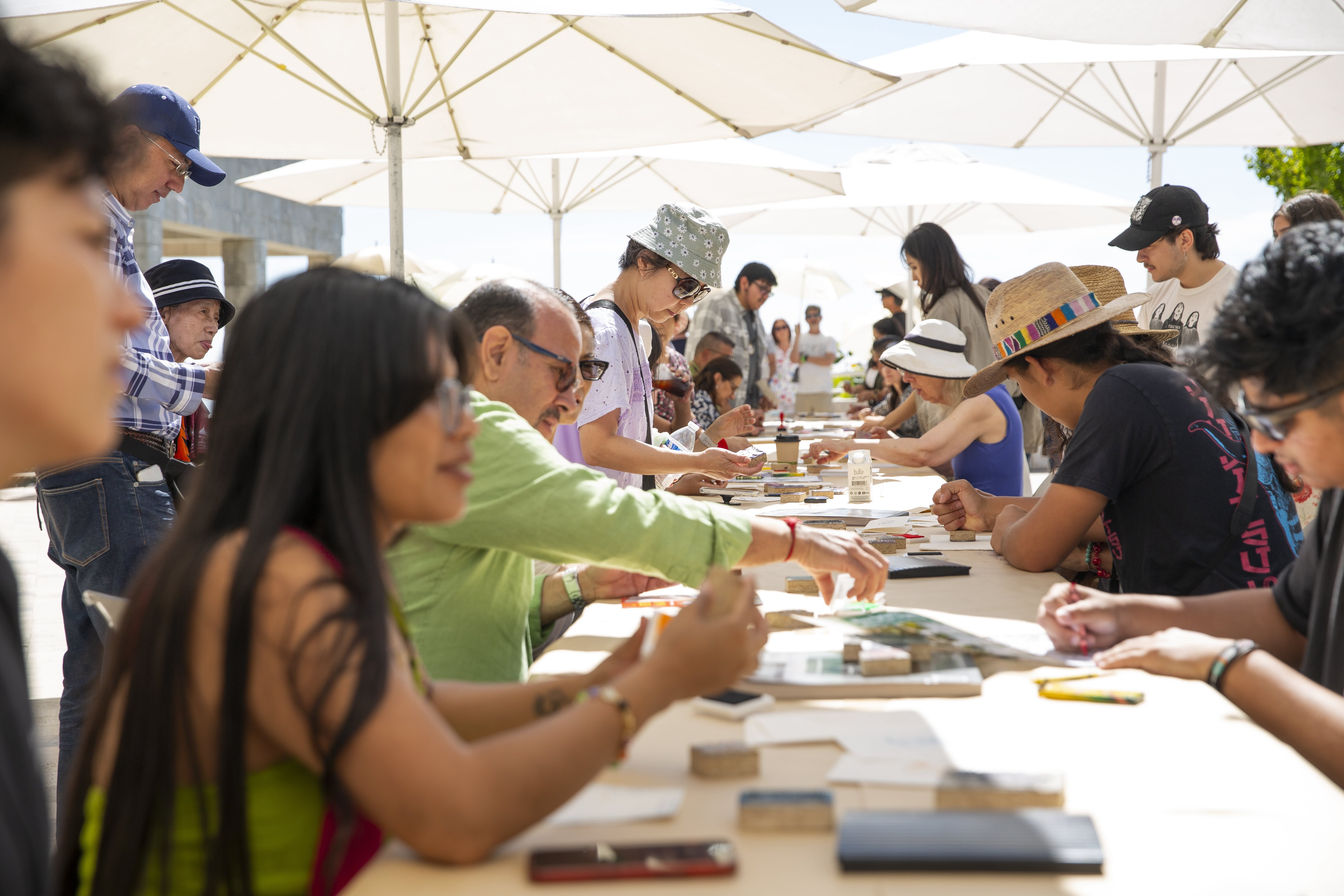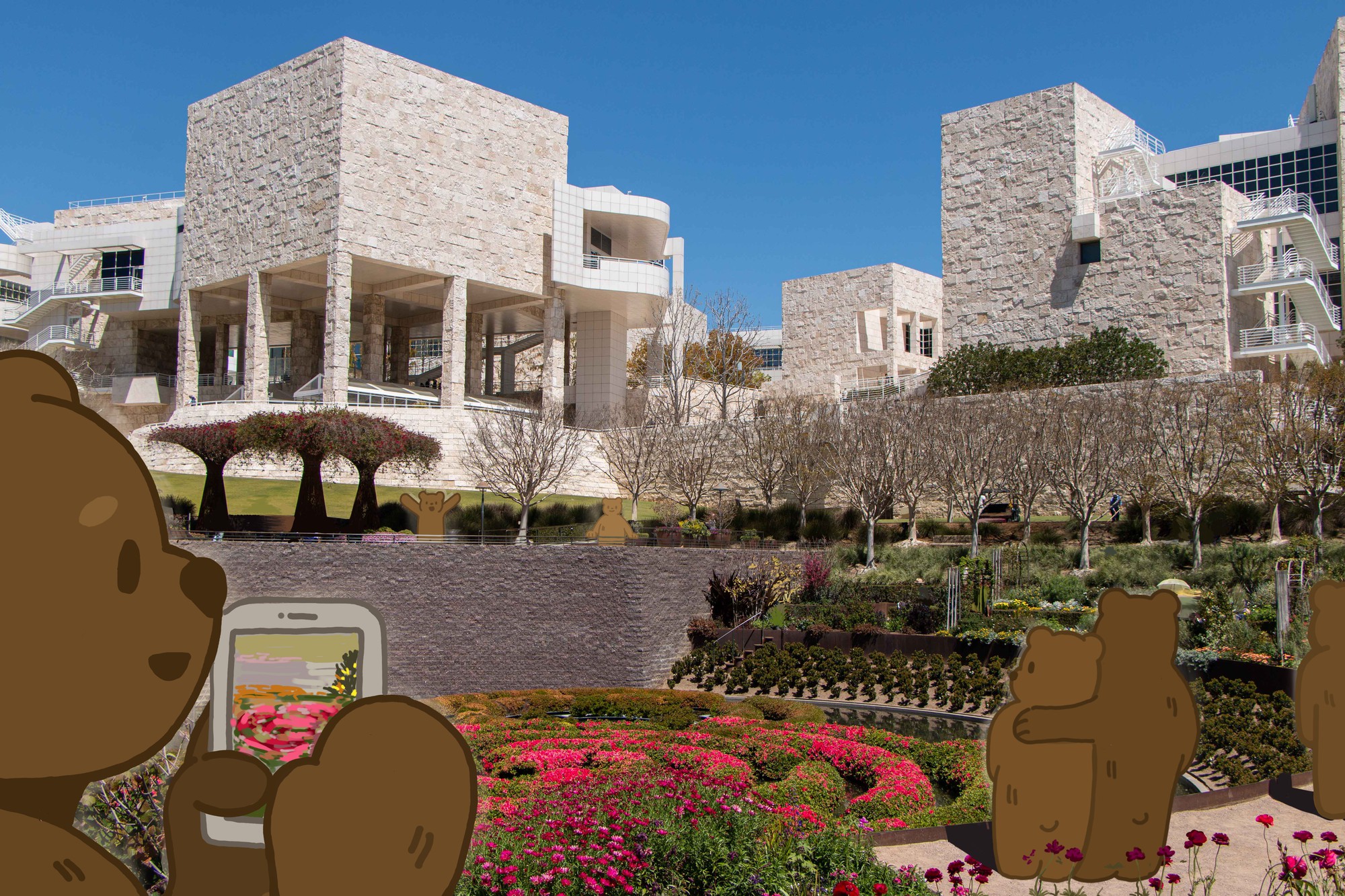Getty Center interns share interpretations of newly exhibited medieval manuscripts
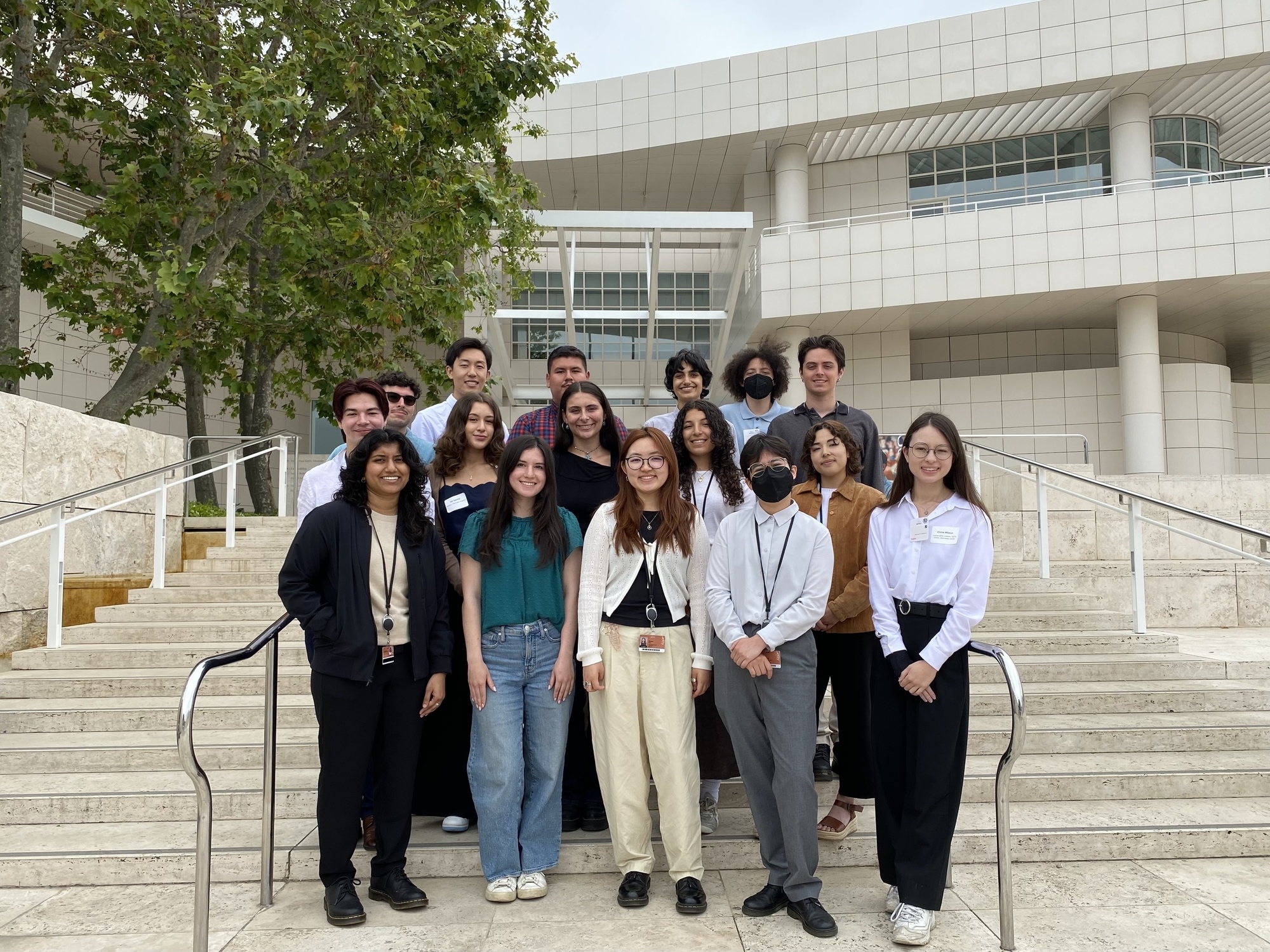
Students who participated in the Getty Marrow Undergraduate Internship program stand together at the Getty Center. UCLA students Luke Godinez and Maya Janaswamy were two of the 16 participants in the summer 2024 program and contributed to the creation of the Getty Center’s ongoing exhibition “Our Voices, Our Getty: Reflecting on Manuscripts.” (Courtesy of J. Paul Getty Trust)
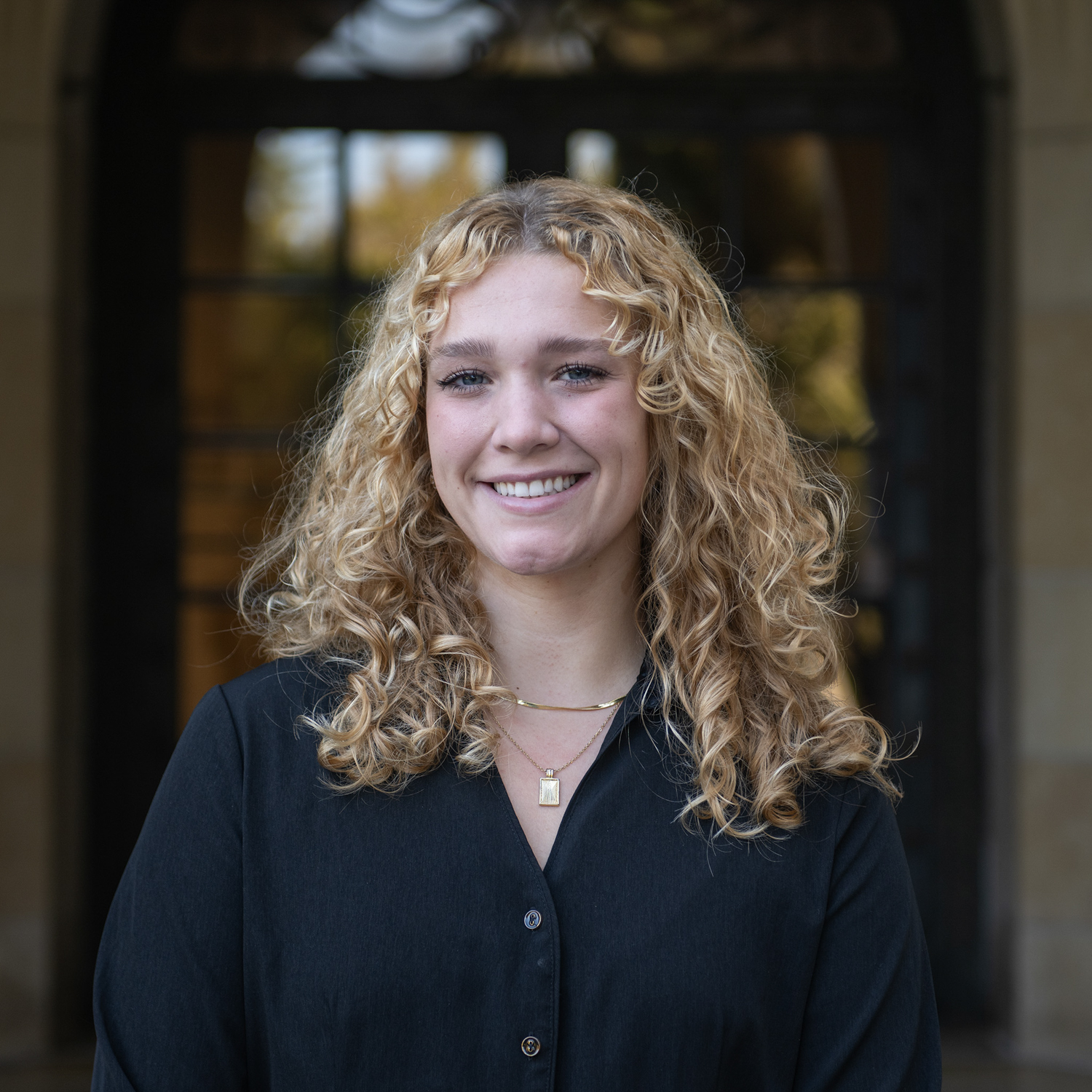
By Eleanor Meyers
March 6, 2025 1:57 p.m.
This post was updated at March 6 at 8:06 p.m.
With an ongoing exhibition, the Getty Center is giving new voices the opportunity to speak up.
Last summer, 16 students in the Getty Marrow Undergraduate Internship program spent 10 weeks learning about the inner workings of the Getty Center. The interns were introduced to a plethora of new disciplines, including conservation, curatorship and public programming, which culminated in a capstone project related to their primary departmental work. UCLA students Maya Janaswamy and Luke Godinez were among the 2024 participants who helped assemble the Getty’s current exhibition “Our Voices, Our Getty: Reflecting on Manuscripts,” which was co-curated by Larisa Grollemond to feature previously unrevealed parts of the museum’s collection of medieval manuscripts. The students’ personal reflections of the pieces will be on display at the Center through April 27.
“There’s room for a lot of different training and backgrounds at museums,” Grollemond said. “This is a way to expose undergrads to a huge variety of different kinds of museum careers that maybe they didn’t even know existed.”
[Related: Art exhibit preview: Winter displays showcase variety of mediums, cultural tales]
Godinez, a third-year art and sociology student, said the initiative of the Getty Marrow Undergraduate Internship program is geared toward students of color and students who would not otherwise have a voice in the museum institution, specifically because most featured collections are heavily focused on European and colonial representation. In partnership with the Los Angeles County Department of Arts and Culture, the Getty Foundation has put more than $14 million toward funding 3,700 internships across 175 local art establishments, including the Getty Marrow Undergraduate Internship program, which was initiated in 1992. This public-private connection has created the nation’s largest paid arts internship program. For students, such programs create opportunities to become more involved in the field, Godinez said.
Janaswamy, a third-year design media arts student, said the internship kept them busy, as they spent nearly every day on site from 8 a.m. to 5 p.m. While Godinez said he participated in the events department, Janaswamy said they worked in mount-making and conservation, during which they learned to build mounts that hold up art pieces. Additionally, Janaswamy said they participated in outdoor sculpture preservation and prepared new museum installations.
“It can get hard sometimes to balance honoring those technical elements that make something aesthetically beautiful and also going with your own gut and your own feelings about what actually makes this object or this piece worth making,” Janaswamy said. “The internship was a really good way that I learned how to balance that.”
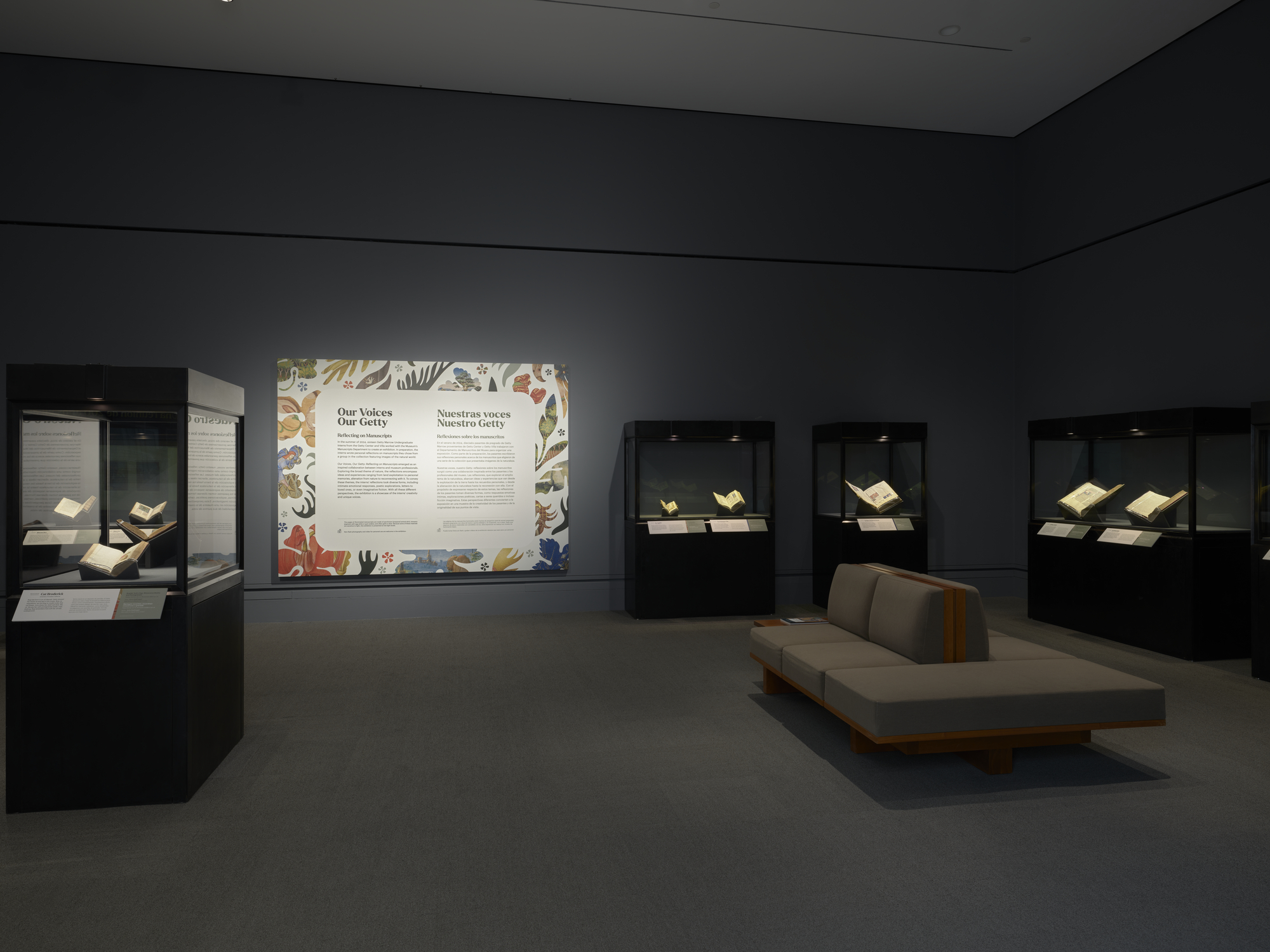
Throughout the internship, Janaswamy said they enjoyed the opportunity to fluctuate between the “Our Voices, Our Getty” exhibition work, daily department projects and off-site visits to various arts institutions in LA. The program – which was divided into two cohorts to accommodate both semester and quarter system students’ academic calendars – included trips to the Getty Villa Museum and the La Brea Tar Pits, Janaswamy said, with a behind-the-scenes tour of the excavation sites at the latter. With a keen interest in Neolithic and cave art, Janaswamy said these antiquity-based visits helped to emphasize the artistic value of manuscripts and their everlasting presence in museum curation.
Each of the manuscripts currently on display at the Getty exhibition is accompanied by an intern’s personal interpretation, all of which vary in tone and approach, Godinez said. Upon being presented with the manuscripts, each student voted for their top three choices and was then assigned one manuscript to reflect upon, Godinez said.
Inspiration for the personal reflections, which were about 50 words each, varied among interns, Janaswamy said. When they received “Constellation” – a 14th century English manuscript illustrating star systems such as Aries and Virgo – as their assigned piece, Janaswamy said they began using three different approaches to develop their reflection, juggling scientific, historical and personal lenses of analysis. Ultimately, Janaswamy said they were moved to label their piece as a homage to a recently lost family member. Conversely, Godinez – who was assigned “The Visitation” – said the reflection process inspired him to meditate on human connection with nature and the linkages of one’s artistic self to their ancestors.
“I really wanted to bring out my connection to this manuscript,” Godinez said. “It’s a Catholic manuscript, and I grew up Catholic. … But also, … when I’m painting or when I’m doing art, ‘How does that relate? How can I bring that into this?’”
[Related: ‘Christina Ramberg: A Retrospective’ examines female body, power with fragmenting]
The participants have remained in touch since the conclusion of the program, Janaswamy said. The program is important because it motivates the Getty to stay relevant to younger generations and tangible for different audiences that visit, Godinez said. While the art showcased in “Our Voices, Our Getty” might be old, Godinez said the collection acts as a vessel for newfound understanding today. Janaswamy added that finding artistic value in the manuscripts, especially when thinking about the time and passion it once took to make them, made the exhibition process impactful.
“I love the Getty. I’ve been going there since I was a little kid,” Janaswamy said. “Honestly, working there was such a dream for me because I’ve had these past experiences of coming with my family, with my mom, and I never ever dreamed that I’d be able to go and work inside the museum.”


